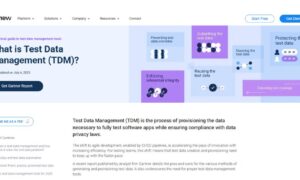In an era defined by data, managing and leveraging information efficiently has become a cornerstone of success. This article explores groundbreaking innovations in modern data warehousing, highlighting transformative technologies and approaches reshaping how organizations handle data. Written by Suresh Kumar Somayajula, an expert in data systems, this piece delves into the evolution from traditional frameworks to cloud-native solutions, painting a vivid picture of the future.
The Evolution of Data Warehousing
While robust in their time, traditional data warehouses struggled to keep pace with growing data volumes and diverse formats. They often relied on static hardware configurations and batch processing, limiting their scalability and responsiveness. Innovations like distributed storage and real-time processing addressed these gaps, enabling businesses to access and analyze vast datasets with unprecedented speed and flexibility.
Cloud-Native Architectures: A Game Changer
One of the most impactful innovations is the adoption of cloud-native architectures. Unlike legacy systems, cloud-native solutions offer unparalleled scalability and elasticity, allowing organizations to scale resources dynamically based on demand. The shift to the cloud also reduces infrastructure costs and enhances accessibility, empowering teams to collaborate seamlessly across geographies.
Automation and AI Integration
Modern data warehouses now integrate automation and artificial intelligence (AI) to streamline operations and derive actionable insights. Automation simplifies data ingestion, transformation, and storage processes, significantly reducing human intervention, errors, and operational complexities. AI-powered analytics delve deeper into datasets, uncovering intricate patterns, correlations, and trends that might otherwise go unnoticed. These capabilities empower organizations to make proactive, data-driven decisions that bolster efficiency and maintain a competitive edge in rapidly evolving markets.
Real-Time Analytics for Instant Decisions
Real-time analytics has emerged as a pivotal capability, transforming how businesses operate. By leveraging in-memory processing and streaming technologies, organizations can analyze data as it arrives, facilitating instant decision-making. This is particularly valuable in e-commerce, finance, and healthcare sectors, where time-sensitive insights can drive critical outcomes.
Security Enhancements in the Cloud Era
Data security remains a top priority, especially as data warehousing shifts to cloud environments. Innovations in encryption techniques, such as homomorphic and quantum-resistant encryption, provide robust protection by securing data during transit and storage. Granular access controls further ensure that only authorized personnel can access sensitive information, while advanced anomaly detection systems use machine learning algorithms to identify and neutralize threats in real time. Embedding security at every layer builds trust and ensures compliance with global regulatory standards like GDPR and HIPAA. These measures are particularly critical for industries such as healthcare and finance, where safeguarding sensitive data is paramount.
Sustainability Through Efficiency
In addition to technological advancements, sustainability has become a focal point in data warehousing. Energy-efficient architectures, such as modular data centers, optimize power consumption by leveraging innovative cooling systems and renewable energy sources. Advanced storage strategies, like tiered storage solutions, prioritize the use of low-energy drives for less frequently accessed data. These measures not only reduce environmental impact but also significantly lower operational costs, enabling organizations to achieve a dual benefit of economic and ecological efficiency. Aligning with broader corporate goals of sustainability and social responsibility, these efforts reflect a growing commitment to greener technologies in the data management sector.
The Future: Convergence of Trends
The trajectory of data warehousing points toward a convergence of several trends. The integration of edge computing, where data is processed closer to its source, will reduce latency and enhance real-time capabilities. Additionally, advancements in machine learning will further personalize analytics, making data more actionable for end users. Automation will continue to evolve, enabling autonomous data warehousing solutions that require minimal human intervention.
As organizations continue to prioritize data-driven strategies, these innovations will play a central role in shaping competitive advantages. The transformation of data warehousing is not just about technology—it’s about empowering businesses to unlock the full potential of their information assets.
In conclusion, Suresh Kumar Somayajula, through their expert analysis, has illuminated the path forward for data warehousing. Their insights emphasize the importance of embracing innovation to stay competitive in a rapidly evolving digital landscape. As these advancements take root, they will redefine how organizations harness data to create value, drive efficiency, and foster growth across industries.



































